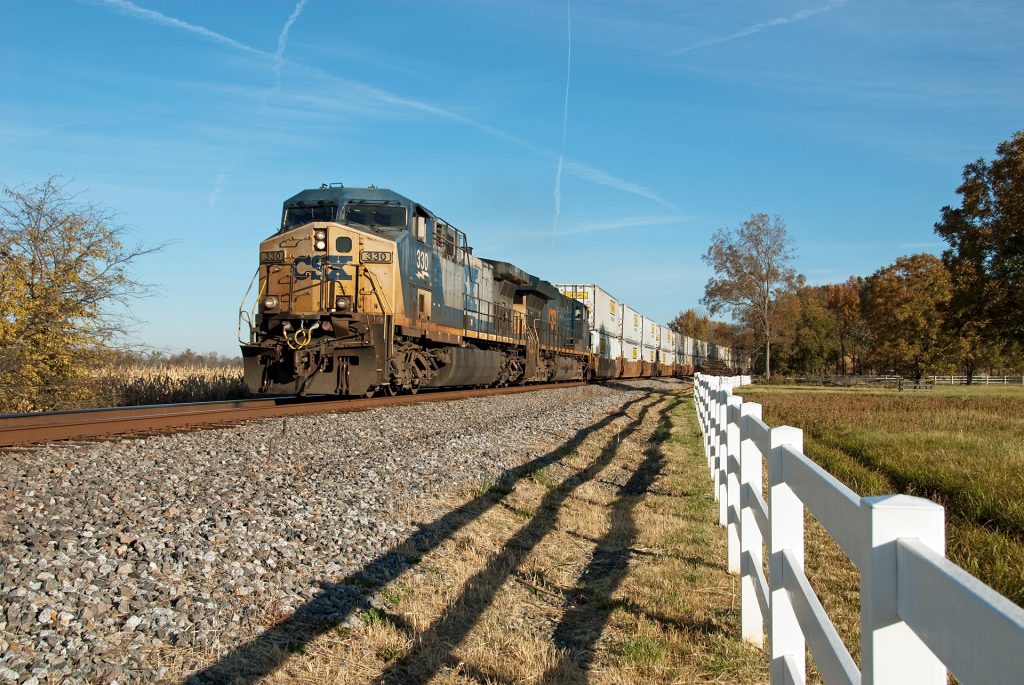
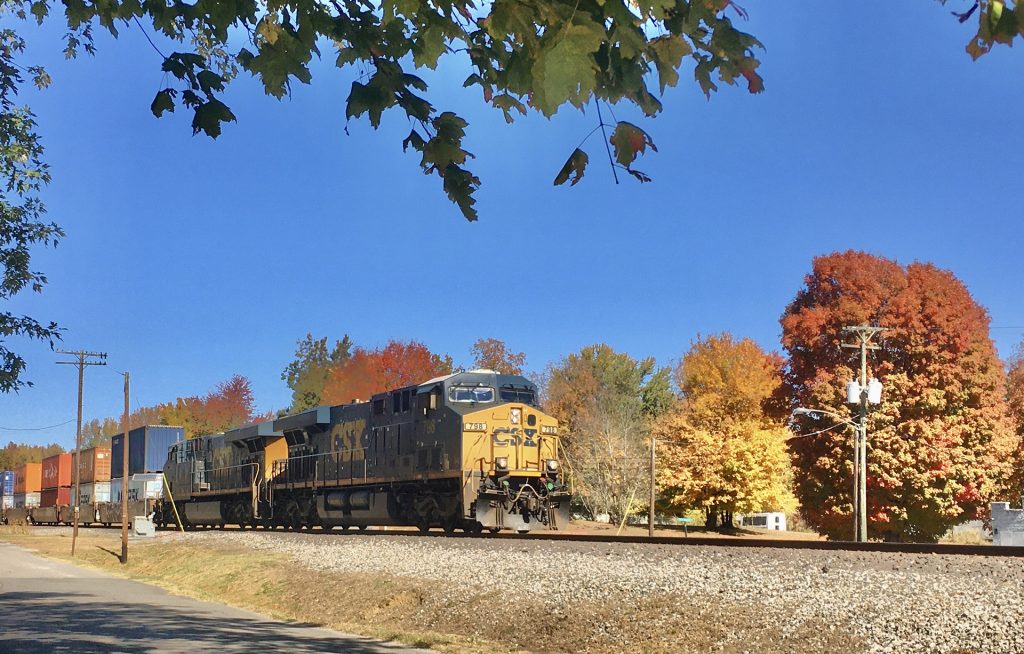
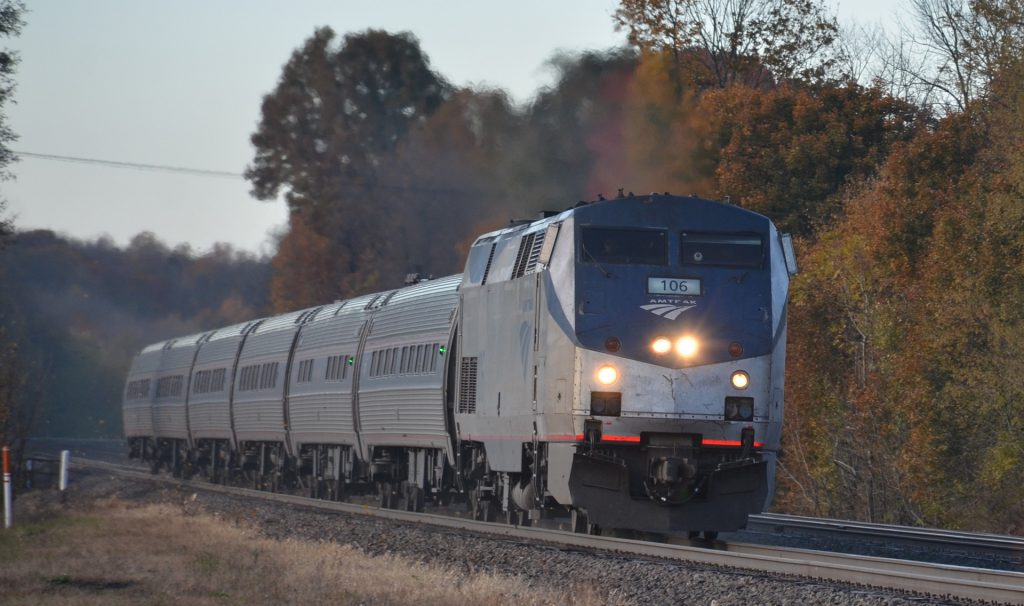




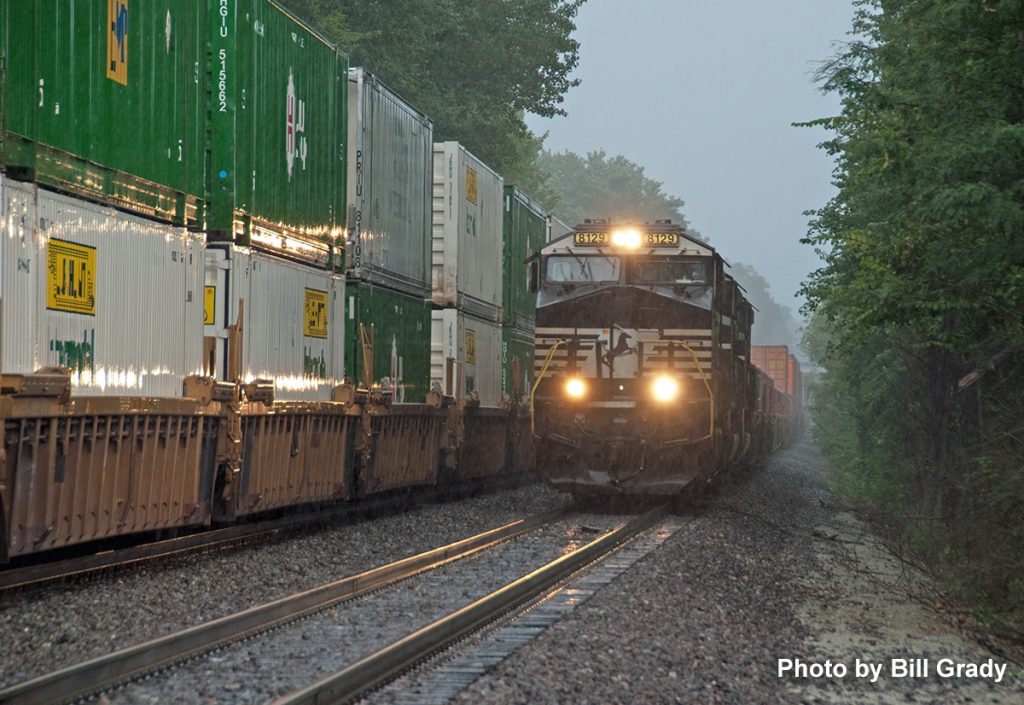
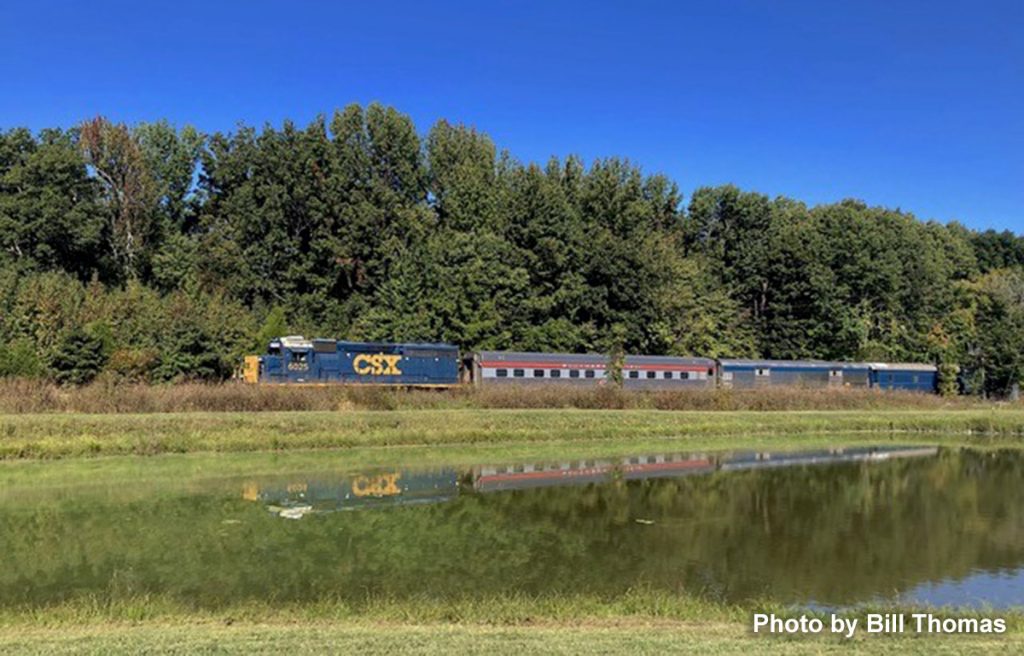
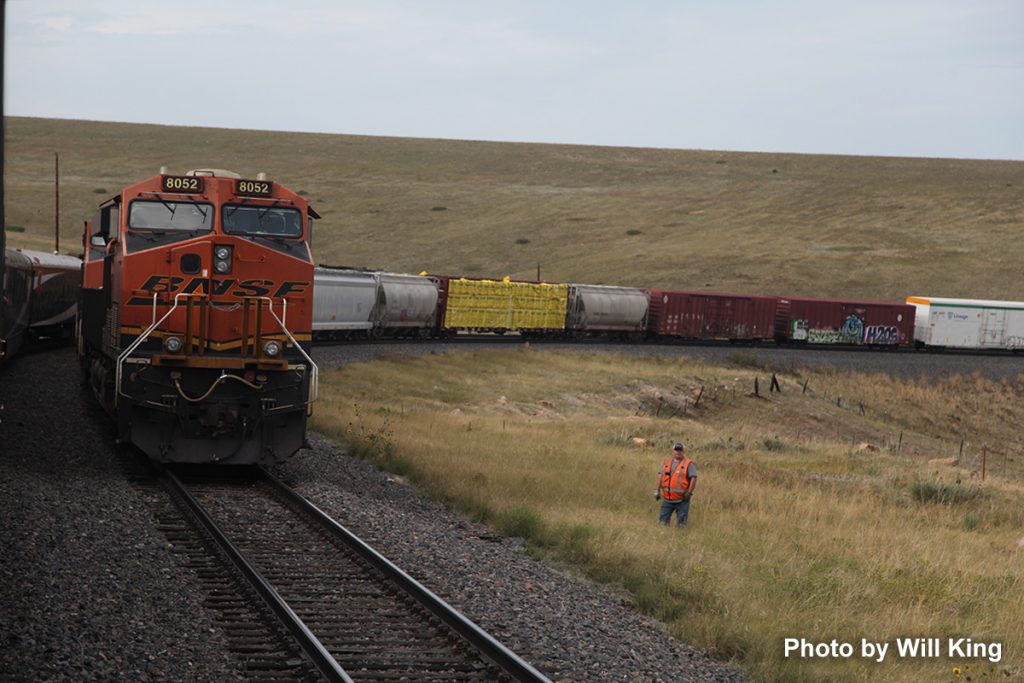

Editor’s Choice – Meadow River Lumber Company steam locomotive, Heisler No. 6, leads a freight train past a wetlands area at Hosterman, West Virginia during the Mountain Rail WV, Rail Heritage Photography Weekend. The event was held at the Durbin & Greenbrier Valley Railroad, Durbin, WV, and Cass Scenic Railroad, Cass, WV, from November 4-6th, 2022.
If you can, take time to google this article on saving and moving 10 railcars from a nuclear power facility in North Carolina! Here’s the link: https://admin.nrhs.com/NRHSNews/202210NRHS-NewsOctober2022final2.pdf


“Like an ancient fossil, the imprint of a fallen leaf on a rusty rail preserves its image until the next train comes along.” That is a direct quote from the regular feature Final Frame in Railfan and Railroad Magazine, September 200l. No location is listed, and I don’t know Bradley McClelland the photographer. But, I’ll bet both are well east of the Mississippi. One of you horticulturists may ID the leaf.
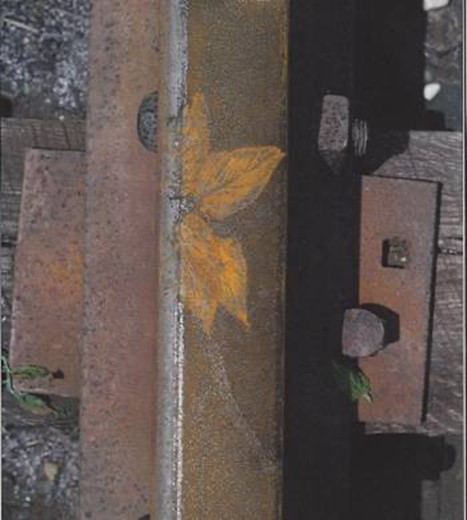
I have to differ with the caption, in that the next train has already appeared. That shiny edge is the inside of the rail, probably on a curve to the left. Pretty much only the flange of the wheels made contact with the rail. On straight track more of the leaf image would have disappeared.
This is jointed rail, probably the typical 39′ length, as you can see one of the four rail bolts, with the nut showing. Just thought this was a neat twist to toss in a little of Mother Nature’s artwork this “Fall” week.
Gary
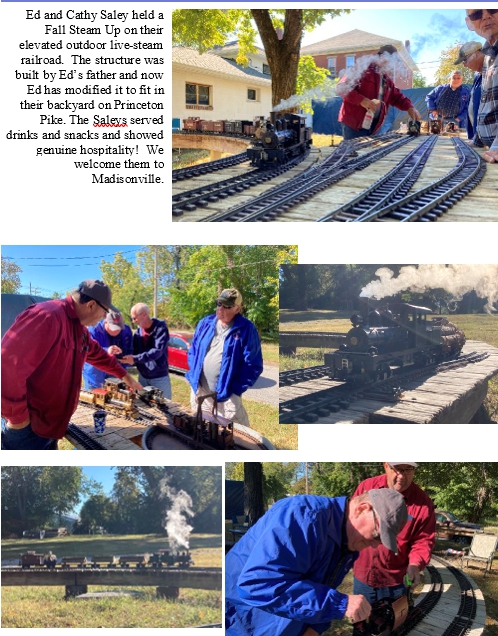
Chapter member Bob Moffet passed on October 9, 2022.




Click Images below to view a larger view of the other entries
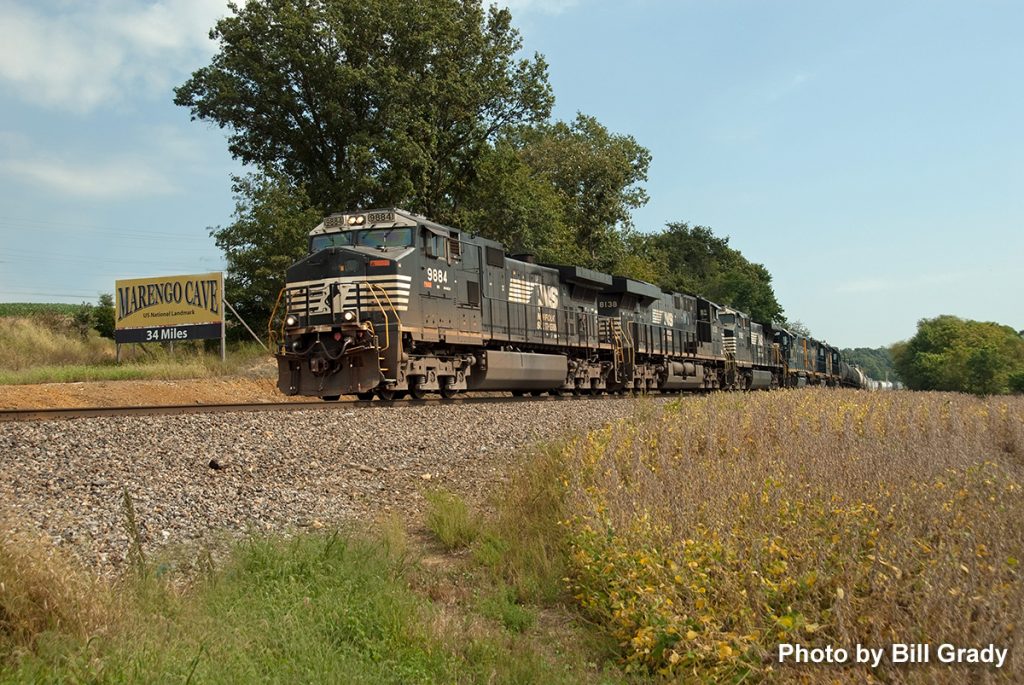
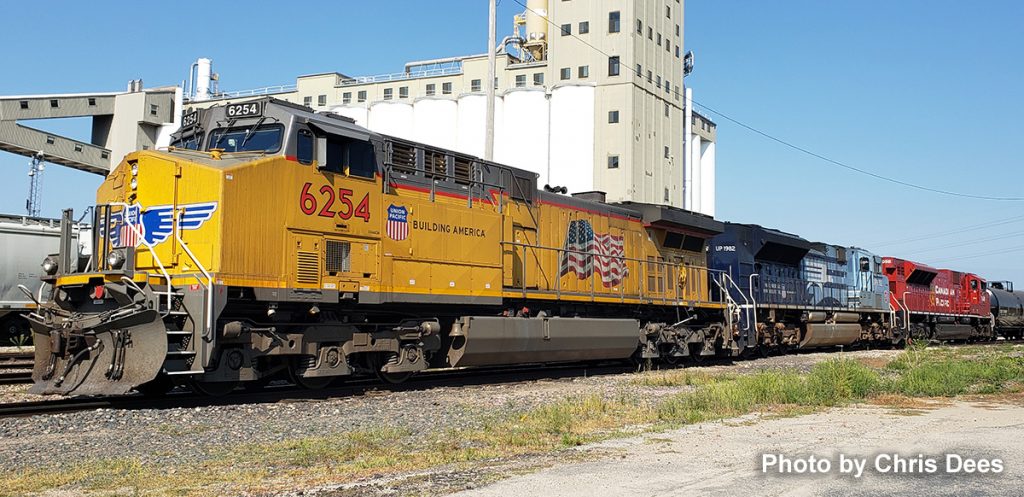
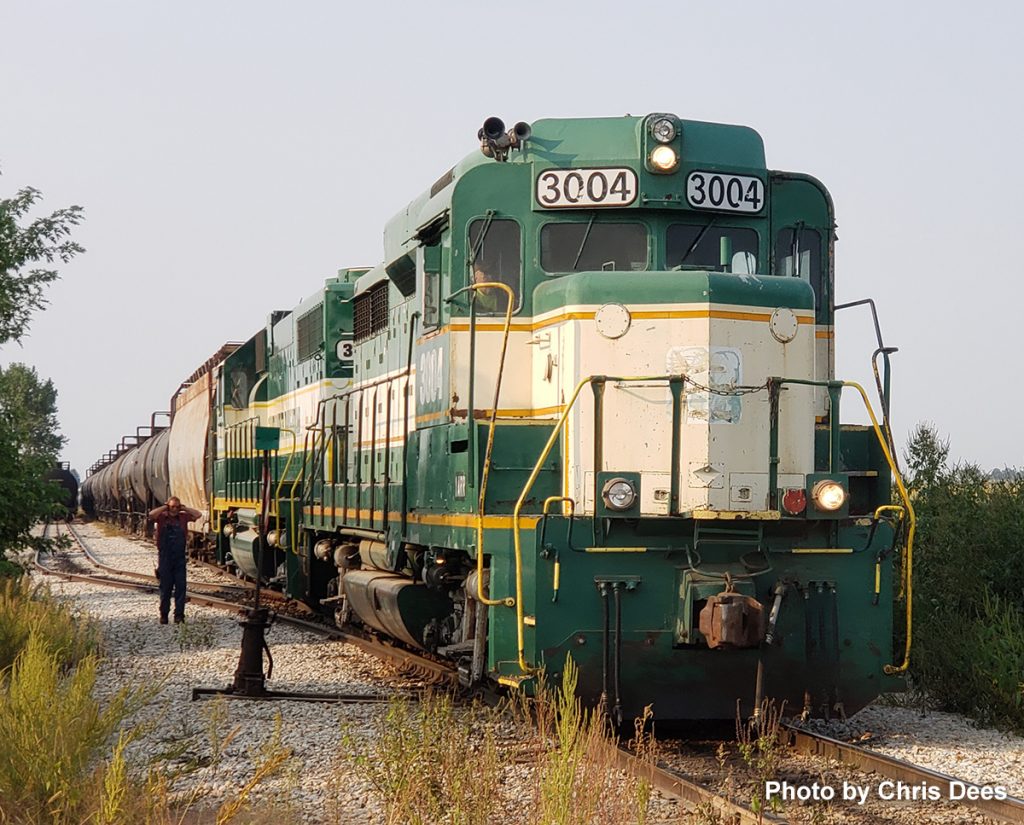
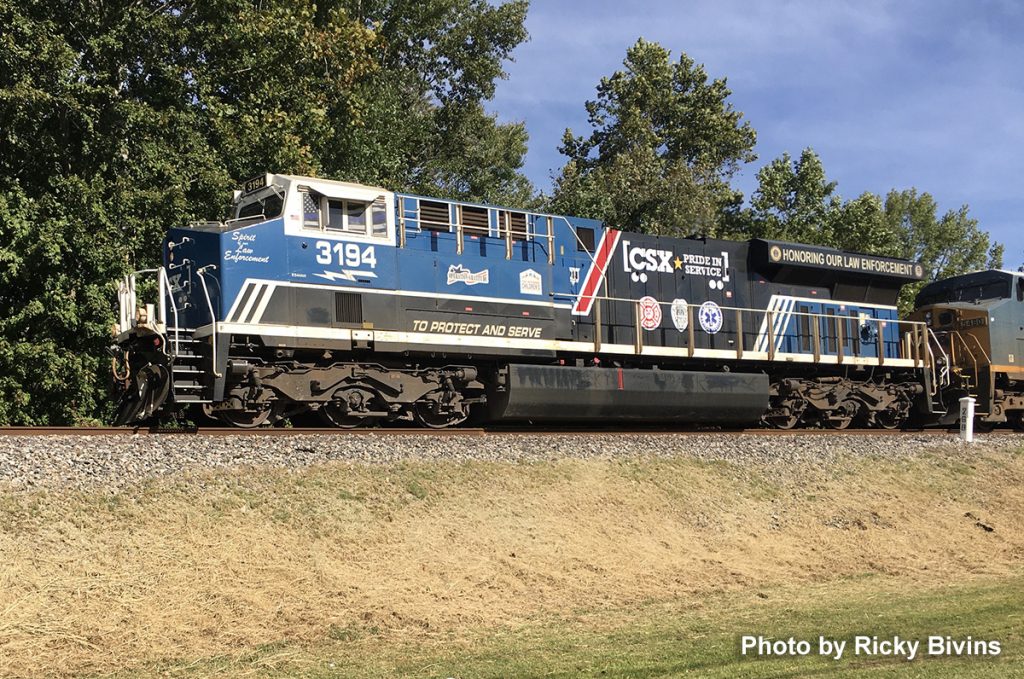
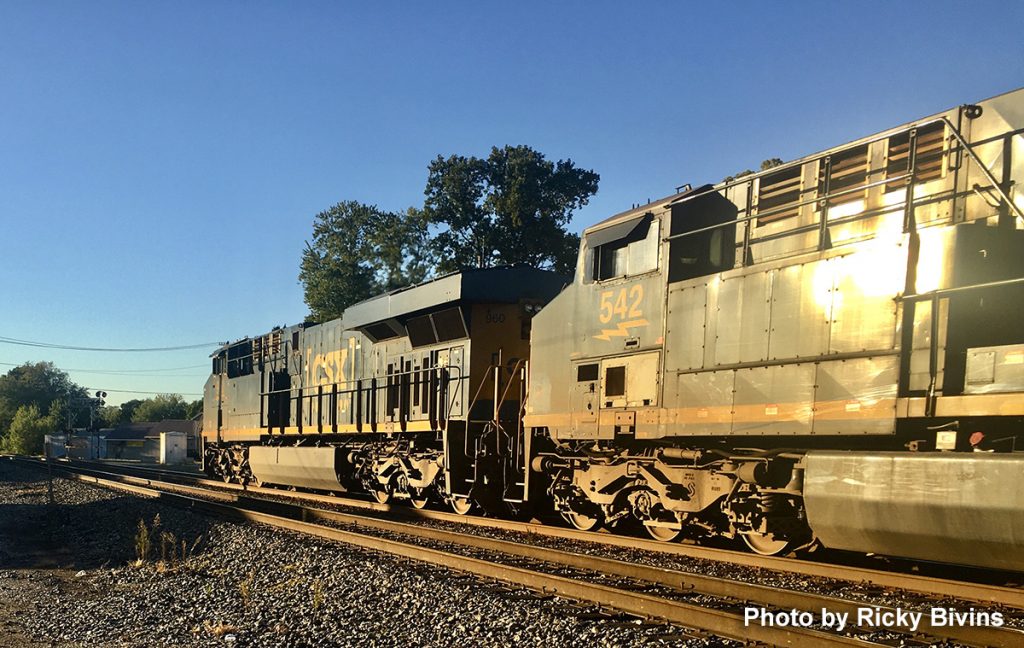
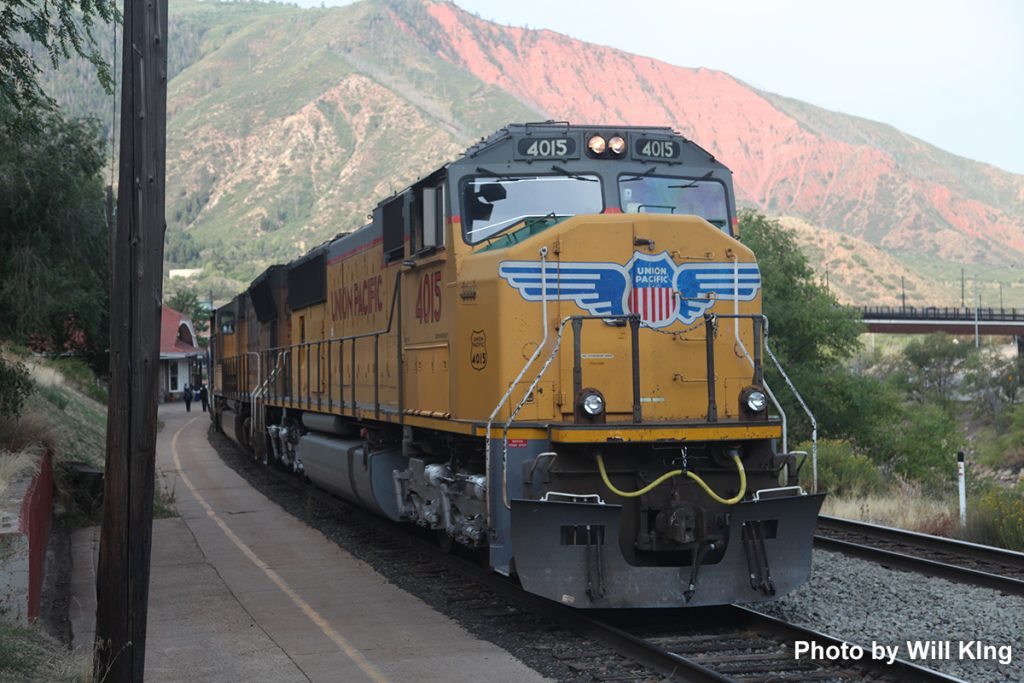

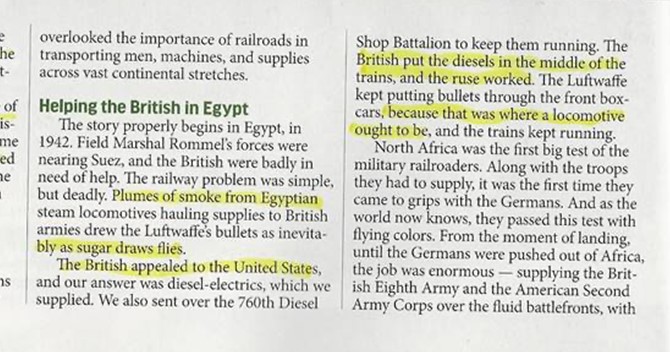
Pix is from Kalmbach’s Classic Trains special “Trains go to War.” My guess is they used the shipping crate. Modifying it slightly to resemble a boxcar, and directed the exhaust downward to be disbursed among the desert sand. (Yankee Ingenuity at its best), Gary O. Ostlund


Rail safety has always been a high priority. Technology has provided the industry with a wide variety of devices to keep us safe, and the railroads from being sued. Even so, railroading is still a dangerous profession, and grade crossings still claim many victims.
Ditch lights, those twin headlights about five feet apart at eye level on the front of locomotives create a triangle of bright light on an approaching train. When the engineer blows the whistle, the ditch lights flash alternately as an added alert for the wary automobile or pedestrian.
It’s been widely reported that ditch lights were the creation of the Canadian railroads in their western mountains. These lights could peek around tight corners spotting fallen rock or other problems. Soon other railroads went along and by the mid-90s most railroad locomotives in the Americas had them. The Federal Railway Administration has since mandated them.
But, wait a second. Look at the second picture to the right. Seems the Russkies beat us to the punch just like Sputnik in 1957. The Russian steamer appeared in the August 1958 TRAINS Magazine. Photo Credits: B&LE 905 – Michael S. Murray, Russian Steamer #251 – J. N. Westwood

This multi-trip, three-day event will operate Friday, January 20th, Saturday the 21st, and Sunday the 22nd.
Trips will feature day-long train rides, multiple photo opportunities, and onboard appetizer and non-alcoholic drink service each day. One day will be behind steam locomotive Sugar Express No. 148 and the other two behind South Central Florida Express diesel locomotives. Three-day packages will be available for $400. Ticket sales begin October 5th.
For more information go to https://sugarexpress.com/rare-mileage-excursion/
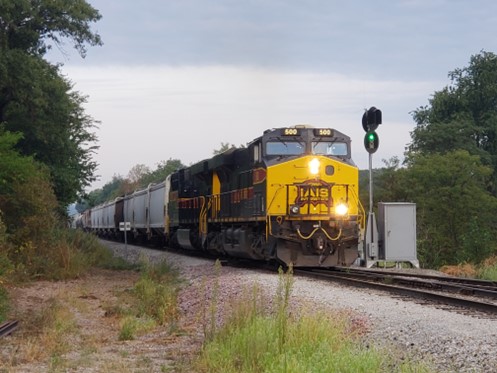

Click on images for full view.



A Moment in Time – It’s August 25, 1994, as Midwest Coal Handling prepares to depart P&L’s Central City, Kentucky yard back to TVA’s Paradise Steam Plant. The four locomotive consist included CF7 2508, GP7u 2005, CF7 2525, and another unidentified CF7. CF7 2525 was still wearing the paint of previous owner Nashville & Eastern. Today CF7 2508 survives in Enid, Oklahoma serving Consolidated Grain & Barge. Photo by Evan Werkema, Chris Dees collection.